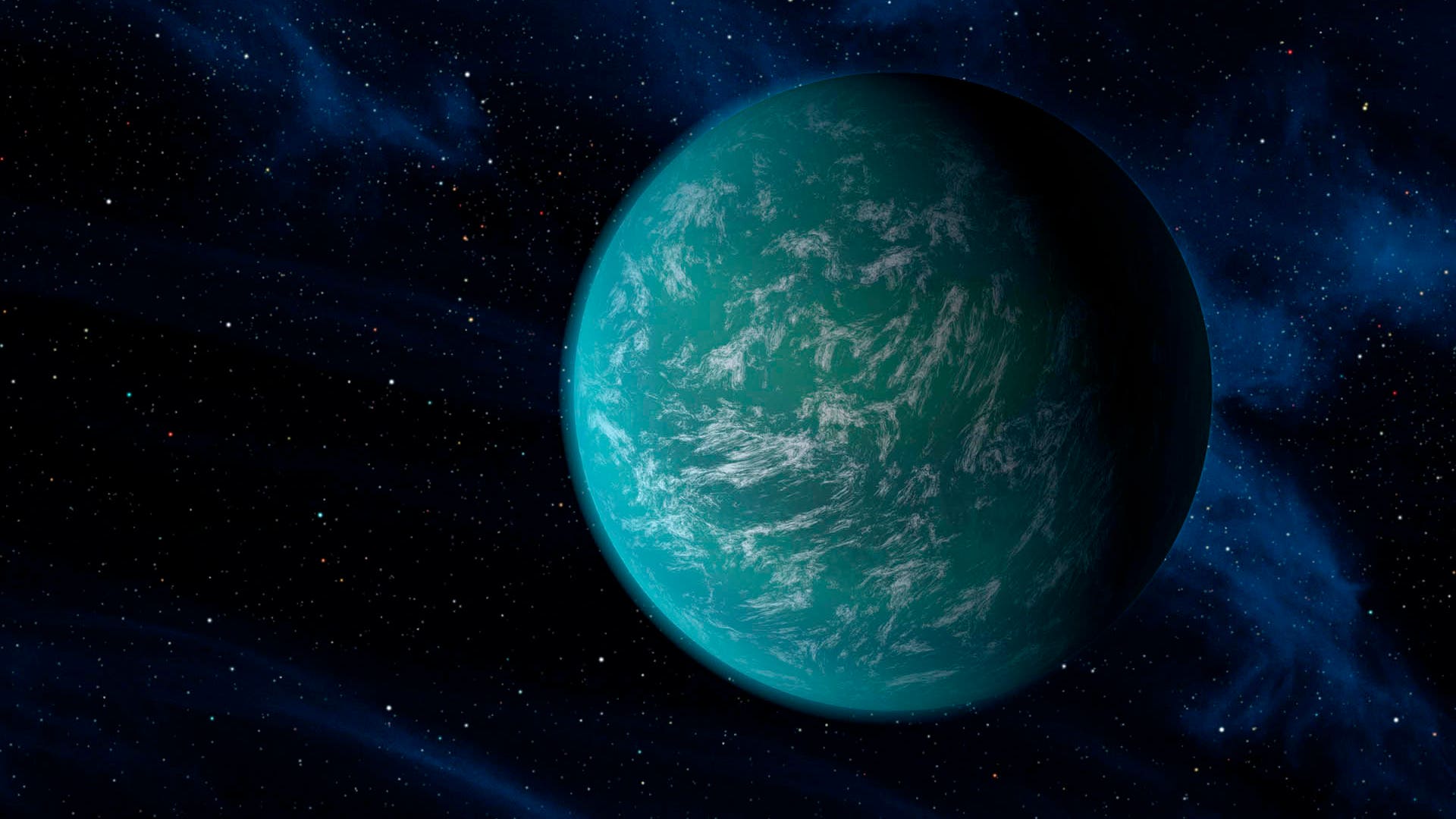Move Back
ADVERTISEMENT
Skip- Published9 Images
9 stunning exoplanet pictures
Astronomers have found a nearby solar system with seven Earth-sized planets, three of which circle their parent star at the right distance for liquid surface water, bolstering the prospect of discovering extraterrestrial life.
![TRAPPIST-1f]() An artist's depiction shows the possible surface of TRAPPIST-1f, on one of seven newly discovered planets in the TRAPPIST-1 system that scientists using the Spitzer Space Telescope and ground based telescopes have discovered according to NASA, in this illustration released Feb. 22, 2017.read moreNASA via ReutersShare
An artist's depiction shows the possible surface of TRAPPIST-1f, on one of seven newly discovered planets in the TRAPPIST-1 system that scientists using the Spitzer Space Telescope and ground based telescopes have discovered according to NASA, in this illustration released Feb. 22, 2017.read moreNASA via ReutersShare![Kepler 22b]()
![Kepler-16b]() NASA handout image shows an artist's concept of the planet Kepler-16b with its two stars. The cold planet, with its gaseous surface, is not thought to be habitable. The largest of the two stars, a K dwarf, is about 69 percent the mass of our sun, and the smallest, a red dwarf, is about 20 percent the sun's mass. These star pairs are called eclipsing binaries.read moreNASA via ReutersShare
NASA handout image shows an artist's concept of the planet Kepler-16b with its two stars. The cold planet, with its gaseous surface, is not thought to be habitable. The largest of the two stars, a K dwarf, is about 69 percent the mass of our sun, and the smallest, a red dwarf, is about 20 percent the sun's mass. These star pairs are called eclipsing binaries.read moreNASA via ReutersShare![HAT-P-1]()
![Transits]() An artist's impression shows a Jupiter-sized planet passing in front of its parent star. Such events are called transits. When the planet transits the star, the star's apparent brightness drops by a few percent for a short period. Through this technique, astronomers can use the Hubble Space Telescope to search for planets across the galaxy by measuring periodic changes in a star's luminosity. The first class of exoplanets found by this technique are the so-called "hot Jupiters," which are so close to their stars they complete an orbit within days, or even hours.read moreNASA via ReutersShare
An artist's impression shows a Jupiter-sized planet passing in front of its parent star. Such events are called transits. When the planet transits the star, the star's apparent brightness drops by a few percent for a short period. Through this technique, astronomers can use the Hubble Space Telescope to search for planets across the galaxy by measuring periodic changes in a star's luminosity. The first class of exoplanets found by this technique are the so-called "hot Jupiters," which are so close to their stars they complete an orbit within days, or even hours.read moreNASA via ReutersShare![Kepler]()
![Alpha Centauri B]() This artist's impression shows the planet orbiting the star Alpha Centauri B, a member of the triple star system that is the closest to Earth in this image released on Oct.17, 2012. Alpha Centauri B is the most brilliant object in the sky and the other dazzling object is Alpha Centauri A. Our own Sun is visible to the upper right. It is also the lightest exoplanet ever discovered around a star like the Sun. The planet was detected using the HARPS instrument on the 3.6-metre telescope at ESO's La Silla Observatory in Chile.read moreNASA via ReutersShare
This artist's impression shows the planet orbiting the star Alpha Centauri B, a member of the triple star system that is the closest to Earth in this image released on Oct.17, 2012. Alpha Centauri B is the most brilliant object in the sky and the other dazzling object is Alpha Centauri A. Our own Sun is visible to the upper right. It is also the lightest exoplanet ever discovered around a star like the Sun. The planet was detected using the HARPS instrument on the 3.6-metre telescope at ESO's La Silla Observatory in Chile.read moreNASA via ReutersShare![Kepler-452b]() An artistic illustration compares Earth (L) to a planet beyond the solar system that is a close match to Earth, called Kepler-452b in this NASA image released on July 23, 2015. The planet, which is about 60 percent bigger than Earth, is located about 1,400 light years away in the constellation Cygnusread moreNASA via ReutersShare
An artistic illustration compares Earth (L) to a planet beyond the solar system that is a close match to Earth, called Kepler-452b in this NASA image released on July 23, 2015. The planet, which is about 60 percent bigger than Earth, is located about 1,400 light years away in the constellation Cygnusread moreNASA via ReutersShare![Kepler-186f]() Kepler-186f, the first validated Earth-size planet to orbit a distant star in the 'habitable zone' - a range of distance from a star where liquid water might pool on the planet's surface, is seen in a NASA artist's concept released April 17, 2014. The star, known as Kepler-186 and located about 500 light years away in the constellation Cygnus, is smaller and redder than the sun.read moreNASA via ReutersShare
Kepler-186f, the first validated Earth-size planet to orbit a distant star in the 'habitable zone' - a range of distance from a star where liquid water might pool on the planet's surface, is seen in a NASA artist's concept released April 17, 2014. The star, known as Kepler-186 and located about 500 light years away in the constellation Cygnus, is smaller and redder than the sun.read moreNASA via ReutersShare- Published9 Images
9 stunning exoplanet pictures
Astronomers have found a nearby solar system with seven Earth-sized planets, three of which circle their parent star at the right distance for liquid surface water, bolstering the prospect of discovering extraterrestrial life.
Move Forward
- 9 stunning exoplanet pictures









Thumbnail View
Image 0 of 9








